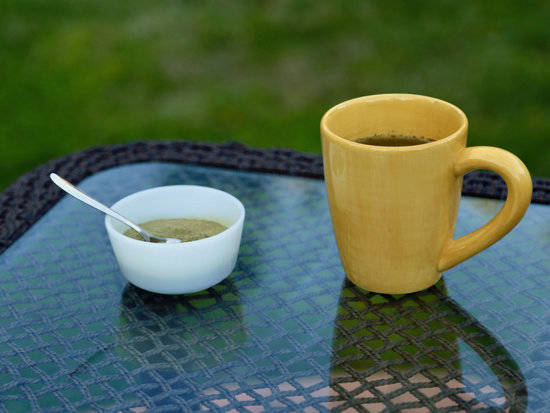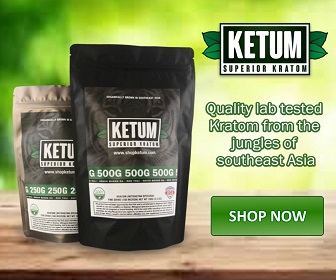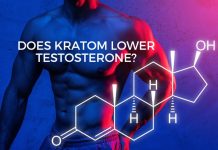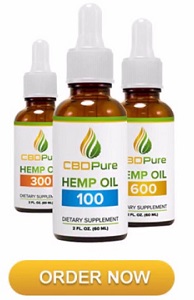People who want to stop taking substance have now started using kratom for substance withdrawal. In fact, many people in recovery claim that kratom helps save lives by assisting the users to stop drugs without any rehab. They claim that using Kratom is more than enough to successfully manage substance withdrawal symptoms.
The substance is powerful painkillers like oxycodone or hydrocodone that are derived from morphine.
Substance not only give pain relief, but also produce euphoria, and in the process instigate recreational abuse. Substance users slowly develop tolerance to the drug after months and years of use and need higher doses for the same relief and euphoria.
Those who try to stop the habit and end up suffering from withdrawal symptoms, making it difficult to kick the habit.
Not only are substances highly dependent, but enough doses and usage can also depress the brain’s respiratory center and make a person stop breathing and die.
If you want an effective treatment or something that works for you, then you need to gain knowledge about that.
Is Kratom really fight against substance dependence? Is it the right alternative to FDA approved or conventional treatments for drug dependence?
You need an answer to several of these critical questions, and here we have eight key facts that you need to know about using Kratom for substance dependence.
1) Kratom Is An All-Natural Substance
Kratom is an all-natural substance that comes from the Mitragyna speciosa tree in Southeast Asia. Its painkilling effects and ability to treat substance dependence is something known for years.
Its leaves have psychoactive properties and are either crushed, smoked, chewed, brewed into a tea, or put into capsules. Read here.
Its extract is also used to make a liquid product that’s marketed as a treatment for muscle pain and for suppressing appetite, to stop cramps and diarrhea, and as a treatment for panic attacks.
2) Kratom Helps People To Stop Their Craving For Substances
Kratom helps people curb their cravings for substances in two ways. It first provides pain relief so that users stop depending on substances for an analgesic. It secondly works by killing their brain’s desire for the substance. It helps to regain your wits, and this is what stops the craving for substances.
You no longer depend on it to improve your mood, and you start feeling good. You don’t even feel as lazy as you were while taking substances prescriptions, nor are you dependent to them anymore. You end up feeling more productive than before and do whatever you normally loved doing.
It is true that kratom is probably dependent, but the dependence is comparable to coffee dependence. It anyway helps relieve substance withdrawal symptoms, which makes it easier for you to quit it.
While kratom offers temporary relief from withdrawal sickness by targeting the brain’s natural substance receptors, too much of kratom can induce a substance-like high. This can ironically lead to the need of a kratom detox.
Here are some true cases of people who have benefited after taking kratom to help stop taking the substance.
- Courtney True was in lousy shape and suffering from stomach cramps, jitters, hot sweats, body aches, and diarrhea because of opioids. It was when she was 14 years old that a doctor prescribed opioid to treat chronic migraine.
She got so used to the drug that by the time she was 24 she was on OxyContin. When she moved to Maine 10 years later, and became a nurse and had kids, the DEA had cracked down on the illegal selling of pills, which lead to her starting heroin.
While she’d tried to quit using remedies like quinine, valerian root, and Imodium A-D, nothing worked. This was when she started doing research online and stumbled across the Reddit thread on kratom.
She was at first skeptical about using it but was desperate for a cure and decided to give it a try. She swallowed some capsules and downed a bottle of extract and waited, expecting a high.
But it wasn’t a high she got. She instead noticed the withdrawal symptoms fading away within 20 minutes. She felt as if a fog had cleared and felt so much better.
It’s been 18 months now, and she’s been off heroin for 17 months and drinks a kratom-grapefruit juice mix a few times a day. She gives kratom credit for saving her life.
- Ariana Campellone grew in East Greenwich, Rhode Island where good heroin was widely available. She by 15 became a daily heroin user, stopped going to school and did nothing but drugs, stole things and do more drugs.
Not only her, everyone she knew was spiraling through the same hell, and even getting diseases through shared needles.
While she kicked the habit at 19 with rehab, suboxone, and willpower, it was while working at a natural remedy shop in San Francisco that her co-workers introduced her to kratom. She tried it and felt it gave her a slight high.
Besides, it was an excellent painkiller, which is why she started using it when hurt or during her menstrual cycle. While she gets a stomach ache if she takes too much of kratom, doesn’t crave it like the heroin when she didn’t take it.
- Robbie Pawelek, a 34-year old bartender, was clear from alcohol and suboxone for four years before he started spiraling in Chicago. He stopped going to recovery programs because the prescription medication that helped ease his anxiety and depression also angered and irritated him.
It was after shifting to Austin about two years ago that his friends told him about kratom that offered euphoria. He noticed that it didn’t do anything the first few times he took it, but he did start feeling balanced, and as an average person for the first time in his life.
He now takes a spoon of either powdered Borneo or Indo strains for a sedative and focusing effect.
He doesn’t mix it with anything or take it every day – just takes it, has a shower, eats something, then coffee and heads to his 12-hour shift. Kratom never gets him high, and things seemed more apparent after consuming.
- Katie had a tough childhood. Her mom passed away at a young age, and her dad remarried within a year. Things didn’t go well at home, which made her start alcohol and weed at 13 and slowly heroin by the age of 18.
She was sent to rehab, only to start again once she came out. She soon started dancing at strip clubs and was arrested for having drug paraphernalia.
She again started taking heroin and joined an escort agency on coming out. She used to go missing for days, and her husband and son were tired of all this.
This was when she started looking for heroin alternatives and learned about kratom. She joined some kratom groups, learned about it and its effects and ordered some samples.
She didn’t feel anything the first time. It was the second time while quitting heroin and crack, that she noticed she didn’t experience any withdrawal symptoms. There was no pain, puking or shitting.
She felt better physically, but not emotionally, and continued taking kratom as other users suggested. She slowly felt stable, transparent and focused without brain fog, and not depressed.
Her energy levels increased, and she got clean and felt great. She now feels much better than before, and even does things she wouldn’t and couldn’t do.
- Lisa Vinson thought surgery would finally give relief from the recurrent abdominal pain her endometritis was causing her. However, little did she know that these surgeries just burnt a hole in her pocket, and lead to more complications and pain.
Doctors kept prescribing her pills to help the discomfort subside. While she did feel better, it was only temporary, and she has taken these prescribed pills for more than ten years now.
Lisa soon developed a tolerance for the painkiller. Every time she met her doctor, he would prescribe more pills, but her pain never entirely subsided. After the pills came the patches, and she was soon on 12 prescription drugs.
Some for pain management and others to manage the other pills’ side effects, she desperately wanted to stop the pills but could not because she was dependent on them.
A mother of 2 kids, she had to take the pills to take care of them. A cycle soon formed where the pain persisted, and she just kept on taking pills and new meds, for pain relief.
She returned to the hospital a year later for some permanent relief to all this discomfort. This is when she found out that she didn’t have a surgery problem, but a drug problem.
Lisa then realized what went wrong and decided to no longer depend on meds for pain relief. She took matters in her own hands and stopped taking pills.
She went through much more pain and suffered from additional opiate withdrawal symptoms. She came across kratom while looking for natural remedies to treat the pain.
She learned about all her prescription meds her doctor had given and how her body grew addicted to it. She started taking kratom for opiate withdrawal and is happy with it.
She now vouches that kratom saved her life. Her life is so much better-taking kratom capsules once a day. She hasn’t upped her dose, which indicates that if taken in the proper dosage, kratom can do better than harm.
3) Several Studies Shows That Kratom Is Good for Substance Withdrawal
Lots of research has been conducted on kratom, and it’s proven that while kratom plant contains various drug compounds, there are two main ingredients with maximum psychoactive effects. They are mitragynine (MG) and 7-hydroxymitragynine (7-HMG).
MG has the most therapeutic potential and is in much higher concentrations than HMG. While MG constitutes about 60% of the plant, HMG makes up only about 2%.
When checked on rats, which could self-administer both compounds by pushing a dial, they found that rats were more interested in HMG and were uninterested in MG.
They weren’t interested in it even after increasing MG doses a few times. This proves that while one of kratom’s main compounds was dependent, the other wasn’t and had the opposite effect.
This proved promising for people using kratom for substance dependence relief by staunching cravings and reducing withdrawal and relapse. While the results are preliminary and only in rats, it’s an excellent find for drug studies at this early phase.
Researchers Oliver Grundmann, Zach Walsh, and Jack Henningfield have also suggested through their research that kratom may have therapeutic potential and shows the possibility of some antidepressant effects.
According to Adi Jaffe’s, kratom also has the potential to replace alcohol in some people by relaxing you without the consequences of an emotional and physical hangover of drinking.
4) Few Researchers Find That Kratom Isn’t A Safe Treatment
While many people claim that kratom can save lives by getting users off drugs without any rehab, most of these claims are from online forums and not any credible medical organizations.
This means that the evidence is anecdotal, and that kratom is still unregulated in the US. Besides, not much research has proven the safety of using kratom for substance withdrawal.
According to Darshan Singh however, people can also get dependent on kratom. There’s a chance of people building a tolerance to it and get dependent on it.
However, its withdrawal symptoms are not so severe and last only 1 to 3 days. At most, they may suffer from some pain and find it painful sleeping.
While studies in experimental animals suggest that high kratom doses are not as fatal as high substances doses, some deaths have been linked to kratom.
These are cases where kratom was used with substances or prescription or OTC drugs. So, it’s not sure if the deaths were a result of kratom, or the drugs or the combination of the two.
There are also lots of side effects reported with kratom usages like anxiety, increased aggression, and irritability. Long term users also complain of loss of appetite, weight loss, psychosis, tremors, and increased pigmentation of cheeks.
There are also cases of seizure reports in high kratom dose users. While the kratom-related seizures may be due to adverse drug combinations, it’s still something to think about.
Researchers also claim that the amount of active kratom ingredient varies greatly, making it difficult to ascertain the effect of a particular dose. Taking kratom can be dangerous, depending on the plant and the user’s health and metabolism.
Kratom is reported to abuse abnormal brain function if taken with prescription medicines where you get a severe headache, get confused, and find it challenging to communicate.
People who take kratom may soon start craving it and require treatments given for substance dependence. Kratom also adversely affects infant development.
So, it can lead to the birth of a baby with withdrawal symptoms needing treatment if taken during pregnancy.
5) According To The FDA, There Are No Approved Uses For Kratom
FDA has issued an advisory about the deadly risks associated with kratom, and that there is no evidence supporting its use for substance withdrawal.
Kratom is also not regulated, and there are no standards for kratom sold in the US. Some of the commercially available kratom products had substantially higher substance levels than the kratom’s raw leaves.
It is difficult to ensure the dosage is correct as no brands can sell kratom for consumption, or advice and claim medical benefits. Without any regulation guidelines, the quality and strength of kratom products in the market are mainly unknown and undocumented.
As kratom isn’t regulated in the US, FDA is working at combating false claims about it.
6) Kratom Is Understudied And Unregulated
While people use kratom to recover from their substance dependence, and it may help by reducing cravings and withdrawal, the FDA is concerned that people are using kratom without any medical supervision.
Kratom is a substance that they are using medicinally but unfortunately is understudied and unregulated by the FDA for the purpose. This presents various risks like dangers of using kratom with other drugs, lack of purity in the substance, and unknown side effects.
Many people assume that it’s safe to take natural substances just because it’s natural. However, any medicinal substance is risky and should be used only with extreme care and caution. And with FDA confirming that kratom contains substance compounds, its risks are now even greater.
FDA had even released a statement about evidence proving that kratom is dangerous. And that most of the kratom effects are similar to substances effects like heroin and narcotic painkillers.
FDA researchers have also used computer modeling technology to find that 22 of 25 major compounds in kratom bind to substance receptors. This effectively makes them substances, which also bind strongly to receptors like heroin or morphine.
FDA has also received reports of some deaths associated with kratom use. While the deaths were similar to substance overdoses, more information is needed to confirm this. But FDA warns that there’s a huge risk of combining kratom with other drugs that are not understood.
There have not been any clinical trials conducted so far determining if kratom can efficiently treat pain and substance withdrawal symptoms.
This is why it is usually over-consumed to lead to many dangerous side-effects like sweating, increased blood pressure, loss of appetite, and even seizures. It has also triggered psychosis in rare cases.
FDA advises that as kratom is unregulated, should refrain from ingesting it till there’s a final and official determination of its clinical manifestations and side effects.
7) According To Users, 3 Kratom Strains Are Good for Substance Withdrawal
There are various kratom strains available, and practically any leaf with high Mitragynine and 7-hydroxymitragynine concentrations work.
However, users specifically suggest three kratom strains for substance withdrawal- Red Bali, Green Maeng Da, and Red Maeng Da because of their slightly higher Mitragynine levels.
It’s left to you to choose which best suits your body because each strain is different. Besides, as people have different body metabolisms, people tend to react differently to different strains.
So, the strain that works best for one person may not work as well in another person. The general consensus is that the reds are a better choice for substance withdrawal.
- Red Bali
This is one of the most popular strains offering various effects, and not just induces pain relief. It’s known for its painkilling abilities and affordability, which adds to its popularity.
In fact, these kratoms with red leaf veins considered ideal for substance withdrawal use because they give pain relief. It also has a strong sedating effect.
- Green Maeng Da
This variety is much stronger than normal kratom leaves, thanks to the special attention some farmers give it. Green Maeng Da is better for increasing energy levels and a quick energy boost.
So if you were taking substances to get high, this is a better option for getting rid of high substance withdrawal symptoms.
- Red Maeng Da
According to Kratom users, the red leaf vein kratom from Bali, Borneo, and Sumatra region are excellent for treating substance cravings and for alleviating substance withdrawal symptoms.
This strain is also a better choice for relaxation and pain relief. So if you are looking for kratom for analgesic relief, Red Maeng Da is the strain to use.
Many users even mix the strains, red and green Maeng Da to reap the benefits of both strains. While taking red Maeng Da alone may make you feel foggy, mixing it with green Maeng Da makes you feel relaxed and clear-headed.
8) Other Treatments Might Be A Safe Solution To Substance Crisis
Instead of resorting, and depending on kratom for substance withdrawal, there is other safer treatment options worth using and trying.
Control And Regulate Opiate Prescriptions
First and foremost, as substances are highly dependent, physicians should control and regulate their prescriptions.
Some physicians have exploited the advantage of having a medical license to declare themselves as pain specialists and offer easy-to-get prescriptions for substances for their patients. There are also some well-intentioned physicians who end up over-prescribing substances.
The best way to curb this crisis is by regulating, educating, and enforcement. This has led to drug makers adding black box warnings and FDA requiring better post-marketing surveillance.
The authorities also have strict laws on ‘pill-pushing’ enterprises that face more aggressive federal and state prosecution.
Over-prescribing can be avoided by creating decision support tools to educate physicians at the time of prescribing and to recommend safe pain control alternatives.
They can also start doses based on assessing any possible substance dependence risk and screening the patient for depression and alcohol use. Physicians are also advised to ensure the patient isn’t already receiving substances prescriptions from other providers before putting them on a substance.
These measures can lead to a drop in substance prescriptions, and in turn, reduce the chances of patients getting dependent to them in the first place. Without any substance dependence, there’s no need to look for a treatment for it.
FDA Approved Medications
There are various new dependence treatments and overdose-reversal tools recently entering the market. There are three FDA approved medications like lofexidine and naloxone. They are both available as injectable and intranasal formulations to help reverse an overdose.
Medication-Assisted Treatment
Medication-assisted treatments effectively treat substance abuse. Medicines like methadone, buprenorphine, and extended-release naltrexone treat substance abuse by blocking euphoria to reduce cravings and withdrawal symptoms to help the brain recover from the dependence.
Despite the many benefits of medication-assisted withdrawal treatments, it’s greatly underused. It’s mainly because of inadequate resources, weak social support systems and restrictive drug and healthcare policies.
Stigmatizing and marginalizing patients also impedes the progress of these treatment options, like some communities opposing the opening of MAT centers in their neighborhood. They believe that MATs are illegal and that the drugs used for treatment are as bad and as abused as substances.
Chiropractic Treatment
Chiropractic treatment can also help by providing pain relief without the side effects of substances. There are many cases and reports of chiropractic care helping people move past dependence while getting the relief they seek in life.
Chiropractic care is anyway a drug-free treatment option. It’s a natural healing process where chiropractors set individualized goals for each patient based on their pain and disability issues.
Physical Therapy And Acupuncture
Similarly, physical therapy and acupuncture are other treatment options that can supplant the need for substance prescriptions.
These treatment options don’t use any prescription drugs for pain relief. They use heat therapy, massage, spinal manipulation, and acupuncture for pain relief.
Stop The Illegal Distribution Of Unused Medicines
Last, but not least, preventing the illegal distribution of unused medicines, like participating in take-back programs can help curb the substance crisis.
About 60% of U.S. households keep their leftover substance medications, in easily accessible and unsecured locations.
This increases the chances of substance users getting substances from friends and relatives without any prescription.
This is why the leftover substances should be properly disposed of. It helps curb substance dependence by preventing substances from falling into the hands of someone who may misuse or sell it.
Rate This Article
[ratings]
















